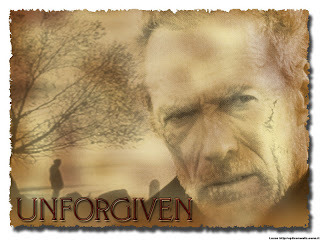Tying Up Loose Ends
Life is messy. Much as most of us like symmetry, life tends more toward the chaotic, the unresolved, the disproportionate—messy. Have you ever have been tail-gated by a jerk that seems intent on ramming your rear bumper one minute, then dashes dangerously around you and speeds off in a spurt of smoke and gravel while you pray for a cop lurking up ahead who will give said jerk the instant karma that he deserves? Have you ever felt that gratifying sense of pleasure when you’ve helped someone unasked—retrieved dropped groceries for a little old lady in the parking lot, grabbed a wayward shopping cart for a frazzled mother with her arms full of cranky baby—only to get back to your own car and find someone keyed the side of it? What’s up with that?
We seem to have an innate sense of balance: good deeds deserve appreciation; bad deeds deserve punishment. Questions deserve answers; chaos requires order. We like things to have balance; we like tit for tat. We like it when loose ends are tied up in nice, neat little bundles.
Not so, life. If karma does exist (and I think it does), it seems to operate on a much larger scale than anything we can discern. More often than not, we do not see the scales dip and rise, then level off in that perfectly symmetrical way. We do not see the jerk get his comeuppance; we do not see the truly generous person rewarded for their giving nature.
So here is the writer’s dilemma: in your story, how little or how much do you tie up the loose ends?
It’s a valid question. If you opt for tying up all the strings into a nice, neat little package, most likely you have imparted a very agreeable sense of satisfaction to your reader. The caveat is that a perfectly resolved story can have an unreal fantasy feeling to it, leaning toward the Disneyesque. If, on the other hand, you opt for a true-to-life feel, you leave some things unresolved and/or dissatisfactory, which can give your reader an uncomfortable, letdown feeling.

In my current work-in-progress (WIP), I am debating that very thing. The overarching plot concerns my protagonist and his struggle against his own stoic, rather cold nature. Throughout the course of the story, events with his girlfriend and mother shift, he evolves slowly, sometimes painfully, finally reaching the point at which we know he will be able to connect with the people around him in a meaningful way. Along the way, I introduced a side plot that was initially there to add texture and explain my character’s background. What I’ve found is that I actually have the mechanism built into the story that could bring this side plot full circle and resolve another big part of my character’s personality. So now my dilemma is, do I tie it all up neatly? Or let the side plot just hang?
One of my favorite movies mixes these two scenarios into a jarring yet pleasing whole. This is the Clint Eastwood Western Unforgiven. In the movie, Will Munny is a ruthless gunman who gave up that life when he met and married his wife. After her death, struggling to make a go of his rickety pig farm, raising two children alone, he is tempted to return to his old life in order to collect a bounty put on a man who cut up a prostitute. The ensuing battle brings back all the old ruthlessness in spades as Munny cuts down multiple heartless bullies and brings justice (aka vengeance) to the prostitutes. In the end (spoiler alert!), after committing numerous cold-hearted murders, Munny is left alive to return to his home.

At first I thought this ending was one of those uncomfortable, dissatisfying real-life endings where things do not balance out. After all that Munny had done, it would seem only fair that he die in the end. But the more I thought about it, the more the ending made sense. He had done unspeakable things. He had killed countless men. His death would balance the accounts. The worst punishment he could experience was not dying—it was staying alive. Staying alive to ruminate on all that he had done. Staying alive to mourn his dead wife. Staying alive to think about the redemption that lay beyond his grasp.
Perfect.
But now back to my story …
Published on October 18, 2012 08:50
No comments have been added yet.



